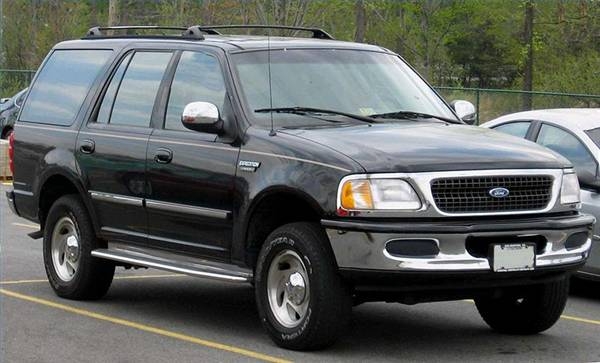
The brake pads on your Ford Expedition require replacement at regular intervals. Every 12 months, or before if necessary, you need to check the lining on the brake pads. This lining contains friction material that wears out after a period of service. If the back material on the brake pads is too thin, you need to replace them to make sure the brake system keeps working properly. Here, you will find the necessary steps to install new brake pads to the rear wheel assemblies on your Expedition model.
Check the brake fluid in the master cylinder. If it is over half full, remove some fluid using a hand siphon pump and leave the lid loose. Then place shop rags underneath the master cylinder to catch brake fluid spill during the brake pad replacement.
Turn off the air suspension if your Ford Expedition model is equipped with it. This will prevent your from accidentally activating the system as you work near the suspension. If necessary, consult your car owner's manual.
Loosen the lugs on both rear wheels using a lug wrench.
Shift the transmission into neutral.
Lift the rear of your Expedition using a floor jack and support it on two jack stands.
Chock the front wheels.
Remove both rear tires.
Press the center of the caliper-anchor housing spring with your thumb until the spring unlatches at both ends. Then remove the spring.
Detach the boots from the brake-caliper guide pins and discard them. Use a pair of slip joint pliers, if necessary.
Unscrew the two guide pins from the brake caliper using a ratchet and socket or torx bit. Discard the caliper guide pins as well.
Lift the brake caliper from the brake rotor and secure the caliper to the suspension using a piece of wire to avoid damage to the brake hose attached to the caliper.
Remove the front brake pad from the brake caliper.
Push the caliper cylinder into its bore using a C-clamp. Use the rear brake pad on the caliper to support the C-clamp screw as it pushes the cylinder.
Remove the rear brake pad from the brake caliper.
Set the new brake pads into the brake caliper.
Install the brake caliper onto the brake rotor.
Start the two new guide pins on the brake caliper by hand. Then tighten the pins using the ratchet and socket or torx bit.
Set the lower and upper arm of the anchor housing spring into the caliper anchor plate. Then press down on the spring with your thumb until the spring snaps in place over the brake caliper cavities.
Depress the brake pedal several times to make sure the brakes are working properly.
Install the tire and the wheel lugs. Then replace the brake pads on the opposite wheel assembly and install the tire and the wheel lugs.
Lower the vehicle and finish tightening the wheel lugs on both rear tires.
Remove the chocks from the front tires.
Add new DOT 3 brake fluid to the master cylinder if necessary. Tighten the lid and remove the shop rags.
Turn on the air suspension if your Expedition is equipped with it.